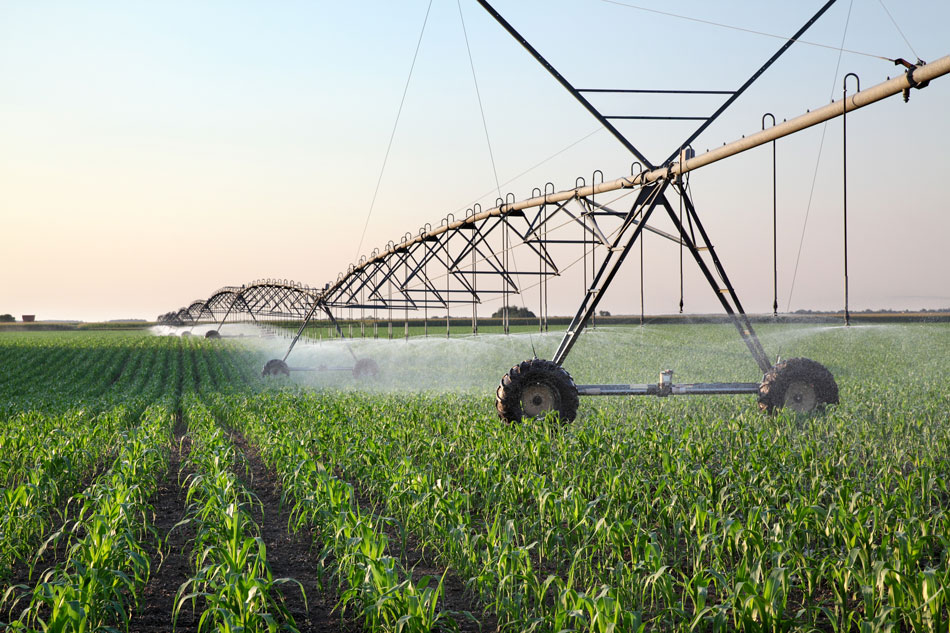
There are many factors that affect microirrigation systems in agriculture that can have an impact on the bottom line. Understanding some of the properties of water will shed light on potential issues that can arise as well as some of the most common water treatment strategies to resolve them.
Water molecules have a polar arrangement of the oxygen and hydrogen atoms—one side (hydrogen) has a positive electrical charge and the other side (oxygen) has a negative charge. Water can dissolve a variety of different substances, which is why it is a good solvent. In fact, water is called the “universal solvent” because it dissolves more substances than any other liquid. This is important to every living thing on earth. It means that wherever water goes, either through the ground or through our bodies, it takes along valuable chemicals, minerals and nutrients.1
Water helps plants (and us) by transporting important nutrients through the plant. Nutrients are drawn from the soil and used by the plant. Without enough water in the cells, plants droop so water helps a plant to stand. Water carries the dissolved sugar and other nutrients through the plant.2
Water is essential for growing most things; however, the nutrients and minerals transported by water are not always beneficial to an irrigation system or the plants they are intended to nurture. Waterborne issues affecting irrigation systems include:
- Biomatter: Filtration can greatly reduce plugging problems. However, algae, biologicals and other small plants and animals that live in or seek the water can still pass through the filters. Microbes that pass through the filters can continue to grow inside the system. Some organisms can build up in numbers, often forming clumps within the tubing at the point where water enters the emitter.
- Scaling: Scaling may be caused by calcium, iron or manganese, to name a few. These elements, usually associated with limestone or iron oxides, are often dissolved in the irrigation water source. Using this water for irrigation without treatment for calcium or iron can lead to scaling and ultimately plug the emitters or even irrigation system pipes.3
- Iron and hydrogen sulfide slime: Iron-rich water leads to the formation of iron bacteria, which convert soluble iron to insoluble iron precipitates. The result is a red, yellow or tan slime in the drip lines and emitters. Iron concentrations of 0.2 parts per million (ppm) are sufficient to support bacterial growth. Hydrogen sulfide in the irrigation water results in sulfur bacteria, a whitish slime with a rotten-egg odor.4
Other issues that may affect the irrigation system:
- Inorganic particulate matter: The primary cause of emitter plugging is foreign material, such as particulate matter (mainly sediment) from soil and/or the water source. These small inorganic particles may pass through filters and cause plugging at the micro-emitter. If the size of the particles exceeds the diameter of the emitter orifice, or if smaller particles stick together to form a much larger mass, then emitter plugging is likely.
- Organic particulate matter: Arthropods, like ants, may enter the emitter from the outside when the irrigation system is idle and become stuck in the tubing as they seek water, particularly when the system is turned on.5
Hidden costs to be considered:
- replacing plugged emitters and dripline
- increased pressure differentials and increased backflush times in the filtration system
- loss of water and energy due to increased backflushing
- increased labor cost to maintain the drip irrigation system
The good news is on-site system analysis including water testing, irrigation flow uniformity evaluations, field evaluations and irrigation equipment inspections can quickly diagnose what the potential issues may be. There are products and services to ensure both water and fertilizer are uniformly distributed to the crops for efficient and cost-effective water use while enhancing the opportunities for maximum yield potential and increased return on investment (ROI).
Integrating chemistry, equipment, remote monitoring, automation and correct water treatment practices can help reduce water usage and increase distribution uniformity. In California, being efficient can help growers comply with the Sustainable Groundwater Management Act (SGMA) while maximizing the efficiency of their water treatment system.
Irrigation water treatment is like changing oil in a car to ensure it runs properly. The irrigation system is at the heart of the operation. It deserves particular attention and preventative maintenance to function properly, which will pay dividends by helping users be more efficient with water and increasing yield potential and ROI.
Common Water Treatment Strategies
Shock treatment:
- A one-time, two-part (sometimes annually) system treatment that involves flushing lines with specific products to clean them and improve irrigation efficiency and effectiveness.
- Remedial treatment is applied after issues have been identified.
Maintenance:
- This is a targeted solution to maintain a higher irrigation efficiency for the entire irrigation season.
Well remediation:
- Chemically cleaning wells to remove mineral scale and biofouling, returning the well to its design output.
- Chemically treating wells is a simpler solution to mechanically cleaning and a fraction of the price.
Reservoir remediation and maintenance:
- Keeping the reservoir free of algae is an important first step in reducing backflush times and maintaining proper pressure differentials in the filtration system.
- Having an algae-free reservoir helps to prevent algae spores from traveling through the drip irrigation system and causing plugging and flow uniformity issues.
- Decreasing backflush times, saving water, energy and extending the life of sand media.
References
Division of Agriculture and Natural Resources,
University of California
This document is SL 265, one of a series of the Department of Soil and Water Sciences, UF/IFAS Extension. Original publication date August 2008. Reviewed February 2021.
Visit website at edis.ifas.ufl.edu.

